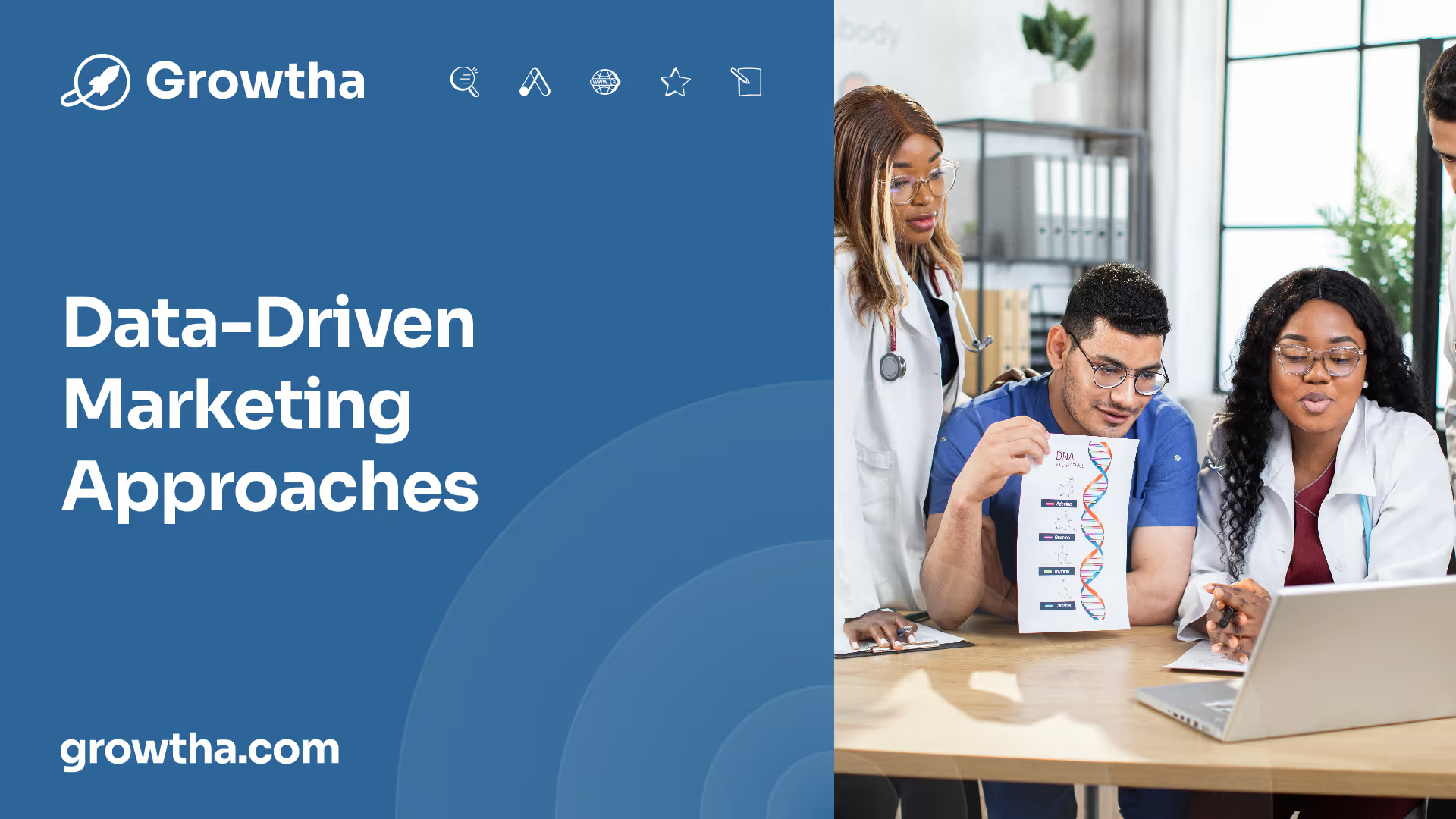Healthcare Marketing Trends in 2024: How to StayAhead
In 2024, two key trends that healthcare organizations should pay attention to are patient loyalty and the importance of trust in healthcare marketing.


Healthcare Marketing Trends in 2024: How to StayAhead
Healthcare Marketing Trends in 2024
In the ever-evolving landscape of healthcare marketing, staying ahead of the trends is crucial for success. In 2024, two key trends that healthcare organizations should pay attention to are patient loyalty and the importance of trust in healthcare marketing.
Patient Loyalty and Healthcare Organizations
Patient loyalty has seen a decline in recent years, leading to fewer patients having a primary care provider and reduced loyalty to healthcare organizations [1]. This shift in patient behavior can be attributed to various factors such as increased access to information, changing consumer expectations, and the rise of alternative care options.
To address this trend, healthcare organizations must focus on building strong relationships with their patients. This involves providing personalized and patient-centered care, delivering exceptional experiences, and establishing trust. By prioritizing patient loyalty, healthcare organizations can improve patient retention, attract new patients, and enhance their overall reputation.
Importance of Trust in Healthcare Marketing
In today's healthcare landscape, consumers seek credible relationships based on trust for information and help, rather than being sold to through traditional marketing messages. Building trust is essential for healthcare marketers to effectively engage with their target audience.
To establish trust, healthcare marketers should prioritize transparency, provide accurate and reliable information, and demonstrate empathy and understanding. By positioning themselves as trustworthy sources of information, healthcare organizations can cultivate strong relationships with patients and become trusted partners in their healthcare journey. Trust is a valuable asset in healthcare marketing and can positively impact patient satisfaction, loyalty, and overall brand perception.
As healthcare marketing continues to evolve, understanding and adapting to these trends will be vital for healthcare organizations aiming to stay ahead. By focusing on patient loyalty and building trust, healthcare marketers can effectively engage with their target audience, drive patient satisfaction, and ultimately achieve their marketing objectives.
Personalized Marketing Strategies
In the ever-evolving landscape of healthcare marketing, personalization has become a key strategy for connecting with patients and delivering tailored messaging. By utilizing targeted email marketing and other personalized approaches, healthcare organizations can enhance patient engagement, improve health outcomes, and build lasting relationships.
Targeted Email Marketing
Targeted email marketing is highlighted as one of the most effective ways to personalize marketing efforts in the competitive healthcare industry [1]. This strategy allows healthcare providers to deliver personalized information that meets the unique needs of patients and health plan members.
By leveraging patient data, healthcare organizations can segment their audience based on relevant criteria and deliver targeted messages through emails. For example, providers can send personalized emails that include information about preventative health measures, upcoming appointments, or specific health conditions. This approach ensures that patients receive relevant and timely information, increasing their engagement and satisfaction.
Benefits of Personalization in Healthcare
Personalized marketing in healthcare refers to tailoring marketing efforts to meet the unique needs and preferences of individual patients. This approach involves gathering and analyzing patient data to deliver more targeted and relevant messaging.
The benefits of personalized marketing in healthcare are significant for both patients and providers. For patients, personalized marketing improves the relevance and effectiveness of healthcare communications, leading to better engagement and health outcomes. Patients receive information that aligns with their specific needs and interests, fostering a sense of connection and trust.
For healthcare providers, personalized marketing helps increase patient retention, attract new patients, and improve revenue. By delivering personalized messaging, providers can strengthen patient relationships and loyalty. Personalization also leads to more efficient healthcare delivery, as patients receive the right information at the right time, promoting proactive healthcare management.
Implementing personalized marketing in healthcare requires careful consideration of factors such as data privacy and security, data accuracy and completeness, patient trust and transparency, segmentation and targeting, and measurement and evaluation [2]. Healthcare providers must adhere to relevant privacy and data protection regulations while implementing personalized marketing strategies to maintain patient trust.
Overall, personalized marketing strategies, including targeted email marketing, provide healthcare organizations with the opportunity to connect with patients on a deeper level, delivering information that is relevant, meaningful, and impactful. By harnessing the power of personalization, healthcare marketers can create stronger patient relationships, drive better health outcomes, and stay ahead in the rapidly evolving healthcare marketing landscape.

Leveraging Technology in Healthcare Marketing
In the ever-evolving landscape of healthcare marketing, leveraging technology plays a crucial role in staying ahead. Two key technological advancements that are shaping the future of healthcare marketing are artificial intelligence (AI) and machine learning (ML), as well as chatbots and conversational interfaces.
Role of AI and Machine Learning
The use of AI and ML in healthcare marketing allows marketers to gather and analyze vast amounts of data for individualized targeting. This enables the delivery of relevant messages and experiences tailored to specific types of patients who are most likely to convert. By analyzing consumer behavior, preferences, and demographics, AI and ML algorithms provide insights that help healthcare marketers effectively predict shifts in consumer behavior and offer personalized information and support.
Additionally, AI and ML algorithms can enhance patient communications through predictive analytics, tailoring marketing campaigns to specific demographics, and personalizing treatments based on individual medical histories [4]. This level of personalization improves patient experiences and increases the likelihood of engagement and conversion.
Chatbots and Conversational Interfaces
Conversational interfaces, such as chatbots, are becoming increasingly prevalent in healthcare marketing. These interfaces engage patients by providing personalized responses based on past interactions and data. Chatbots offer 24/7 availability for accessing information and support, enhancing patient experiences and building trust and loyalty.
Chatbots are powered by AI and are capable of analyzing patient queries and providing accurate and timely responses. They can handle a wide range of inquiries, from appointment scheduling to general health information. By utilizing chatbots, healthcare organizations can enhance patient experiences, increase accessibility to information and support, and improve overall satisfaction.
By embracing AI, ML, and chatbots, healthcare marketers can leverage technology to gather valuable insights, personalize marketing campaigns, and enhance patient engagement. These technological advancements not only streamline processes but also improve patient experiences, ultimately leading to better outcomes in healthcare marketing.

Data-Driven Marketing Approaches
In the ever-evolving landscape of healthcare marketing, data-driven approaches have become increasingly important. By leveraging patient data, healthcare organizations can gain valuable insights to inform their marketing strategies and deliver more targeted and personalized messaging. Two key data-driven marketing approaches in healthcare are patient data utilization and account-based marketing (ABM).
Patient Data Utilization
Patient data utilization is at the core of personalized marketing in healthcare. It involves gathering and analyzing patient data to create more targeted and relevant marketing campaigns. By understanding the unique needs, preferences, and behaviors of individual patients, healthcare organizations can tailor their messaging and outreach efforts to foster better engagement and improve health outcomes.
With patient data, healthcare providers can segment their patient population based on relevant criteria. This segmentation allows for more precise targeting and the delivery of personalized messaging through preferred channels. For example, healthcare providers can use patient data to send personalized emails that include information about preventative health measures or create targeted social media ads that promote healthy lifestyle choices.
Implementing personalized marketing strategies requires careful consideration of factors such as data privacy and security, data accuracy and completeness, patient trust and transparency, segmentation and targeting, and measurement and evaluation. Healthcare providers must adhere to all relevant privacy and data protection regulations to ensure patient data is handled securely and ethically while implementing personalized marketing strategies.
Account-Based Marketing (ABM)
Account-Based Marketing (ABM) is another data-driven approach that is gaining traction in healthcare marketing. ABM focuses on targeting and engaging key accounts, such as healthcare providers, payers, or large corporations, with personalized messaging and tailored experiences. This approach allows for a more strategic and focused marketing effort, maximizing the impact of resources and nurturing relationships with high-value accounts.
ABM involves identifying target accounts and creating customized marketing campaigns that address their specific needs and pain points. This approach requires a deeper understanding of the target accounts and their decision-making processes. By leveraging patient data and market insights, healthcare organizations can deliver highly relevant and compelling content to key decision-makers in these accounts.
By utilizing patient data and implementing account-based marketing strategies, healthcare organizations can enhance their marketing efforts and achieve better results. These data-driven approaches not only improve patient engagement and health outcomes but also contribute to increased patient retention, new patient acquisition, and improved revenue. Furthermore, leveraging patient data enables healthcare providers to optimize healthcare delivery, improve population health outcomes, and reduce costs.
It is important for healthcare organizations to approach data-driven marketing approaches with a focus on privacy and data protection. Adhering to relevant regulations and ensuring transparent communication with patients helps to build trust and maintain ethical data practices. By leveraging patient data responsibly and ethically, healthcare organizations can unlock the potential of data-driven marketing to stay ahead in the evolving healthcare marketing landscape.
Emerging Trends in Healthcare Marketing
As the healthcare industry continues to evolve, new trends are emerging in healthcare marketing. These trends help healthcare organizations stay ahead and effectively reach their target audiences. Two significant emerging trends in healthcare marketing are the integration of telehealth and AI and the innovations in retail pharmacy.
Telehealth and AI Integration
Telehealth is revolutionizing the way healthcare services are delivered, and its integration with artificial intelligence (AI) is poised to drive further innovation. According to MarTech, telehealth is projected to have an annual growth rate of 24% from 2023 to 2030. Increasing numbers of healthcare consumers are opting for telehealth over in-person appointments for routine healthcare needs. This shift in consumer behavior necessitates that healthcare marketers adapt their strategies to meet the growing demand for telehealth while considering potential barriers.
The integration of AI with telehealth offers global assistance and data-driven care through virtual consultations and remote patient monitoring. E-health platforms collect data from Electronic Health Records (EHRs), wearables, and more, enabling comprehensive patient health tracking. This trend enhances accessibility to healthcare services, especially in remote areas, and optimizes resource allocation for critical cases in 2024.
Retail Pharmacy Innovations
In the retail pharmacy landscape, innovations are playing a crucial role in meeting changing consumer needs. According to McKinsey, retail pharmacies are facing challenges such as saturated retail locations, labor shortages, inflationary pressure, and a leveling-off of generic drug penetration. To effectively compete in this environment, retail pharmacies need to better understand and adapt to changing consumer preferences.
Retail chains are the largest and most prevalent type of retail pharmacy, representing a third of stores and about a third of prescription revenues in 2021. These retail chains dispense approximately 138,000 prescriptions annually per store, demonstrating their significant role in the industry. To meet changing consumer preferences, retail pharmacies are innovating by leveraging technology, enhancing the customer experience, and expanding their services beyond traditional pharmacy offerings. This includes services such as medication adherence programs, medication therapy management, and personalized health consultations.
By embracing these emerging trends in healthcare marketing, organizations can effectively navigate the evolving healthcare landscape and better meet the needs of their patients and consumers. The integration of telehealth and AI provides opportunities for virtual health visits and comprehensive patient health tracking, while innovations in retail pharmacy enhance the customer experience and expand service offerings. Staying ahead in healthcare marketing requires embracing these trends and leveraging them to deliver exceptional patient care and experiences.
Challenges in Healthcare Marketing
As healthcare marketing continues to evolve, it faces various challenges that require careful navigation and strategic planning. Two significant challenges in healthcare marketing in 2024 are privacy concerns and compliance, as well as the fragmentation of the media landscape.
Privacy Concerns and Compliance
Protecting patient privacy while utilizing first-party data for healthcare marketing purposes is a crucial challenge for healthcare marketers. Striking the right balance between advancing healthcare education and improving patient health while complying with regulations such as the California Consumer Privacy Act (CCPA) and the Health Insurance Portability and Accountability Act (HIPAA) is essential [7].
Reaching target audiences has become more challenging due to increasing privacy protections on popular platforms like Google, Facebook, Instagram, and LinkedIn. These platforms have eliminated the ability of healthcare organizations to target users based on healthcare-related characteristics. Marketers must adapt their strategies to comply with these privacy measures while finding alternative methods to effectively reach and engage their target audiences [7].
Fragmentation of Media Landscape
The healthcare marketing landscape in 2024 is characterized by increased fragmentation, with a wide range of media options available. This includes Over-the-Top (OTT) platforms, streaming audio services, and programmatic advertising. While this fragmentation offers more opportunities to reach audiences, it also presents challenges.
The fragmentation of the media landscape may reduce the impact of limited financial resources for healthcare organizations. To overcome this challenge, healthcare marketers need to advocate for media types that will most effectively meet their goals. Understanding the target audience and selecting the most suitable platforms and channels will be critical in optimizing marketing efforts within the constraints of available resources [7].
Navigating the complex media landscape requires healthcare marketers to stay informed about emerging trends and adapt their strategies accordingly. By understanding the preferences and behavior of their target audience, marketers can make strategic decisions regarding media placements and ensure their messages are effectively delivered to the intended recipients.
In summary, healthcare marketers in 2024 face challenges related to patient privacy, compliance with regulations, and the fragmentation of the media landscape. By prioritizing patient privacy while finding innovative ways to reach target audiences, and by strategically selecting media channels and platforms, healthcare marketers can overcome these challenges and stay ahead in a rapidly evolving healthcare marketing landscape.
References
[1]: https://www.healthwise.org/blog/common-content-challenges.aspx
[2]: https://abmatic.ai/blog/personalized-marketing-for-healthcare-strategies-and-considerations
[3]: https://levohealth.com/the-future-of-personalized-marketing-in-the-healthcare-industry/
[4]: https://martech.health/articles/healthcare-marketing-trends-in-2024-how-to-stay-ahead
[5]: https://www.linkedin.com/pulse/revolutionizing-healthcare-ai-trends-prospects-2024-bluebashco-3jkdc
[6]: https://www.mckinsey.com/industries/healthcare/our-insights/meeting-changing-consumer-needs-the-us-retail-pharmacy-of-the-future
[7]: https://www.weinbachgroup.com/blog/five-biggest-healthcare-marketing-challenges-for-2024-and-how-to-effectively-overcome-them/







